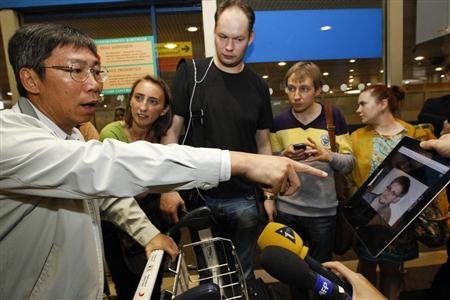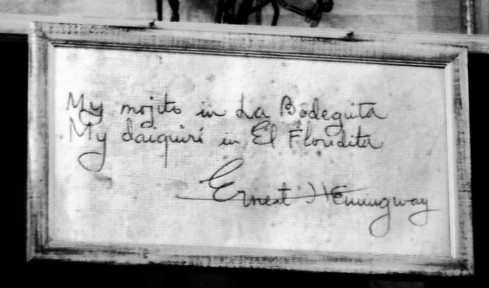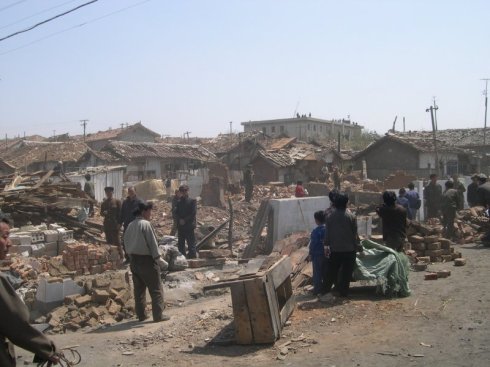Global Trail of Dead Scientists Price of Illicit Pyongyang-Syria Weapons Collaboration
Deadly Spy War Erupts When Israel Views the Two Pariah States Have Crossed a ‘Red Line’
BY NATE THAYER
JUNE 20, 2013
NKNews.org
WASHINGTON, D.C. –
In July 2007, an explosion rocked the al-Safir chemical weapons and ballistic missile research facility buried in cavernous underground tunnels dug under a mountain near Allepo in Northwestern Syria. Under the command of the Syrian Scientific Studies and Research Center, Syria’s largest and most secret military facility was constructed by North Korean specialists in the 1990’s.
Working in the pre-dawn cool desert temperatures, the blast killed North Korean missile engineers attempting to weaponize North Korean supplied Scud-C missiles with mustard gas chemical warheads at a North Korean built weapons development base near Allepo.

photo released by the Syrian official news agency SANA, Syrians walk through the rubble at the scene where multiple explosions hit the center of Aleppo, Syria on October 3, 2012.
The mysterious explosion released VX and Sarin nerve agents and mustard gas into the atmosphere, killing at least 15 Syrian military and chemical warfare specialists, “dozens” of Iranians engineers, and at least three North Korean ballistic missile experts.
Syrian defense sources told Jane’s Defense Weekly that during a 26 July “test to weaponize a 500 km ‘Scud C’ with a mustard gas warhead, an explosion occurred in a laboratory adjacent to a chemical agent storage facility” at the most heavily gaurded military camp in Syria.
While Syrian investigators privately determined the blast was an act of sabotage, one senior Israeli intelligence official told Israeli journalist Ronen Bergman, a top authority on Israeli’s secret services, that it was “a wonderful accident.’
Less than two months later, in September, 2007, Israeli F-16 fighter jets destroyed a North Korean-designed and constructed plutonium nuclear weapons plant in the remote northeastern Syrian Desert. That assault killed an estimated 10 North Korean nuclear scientists working at the secret nuclear facility near the Euphrates river.
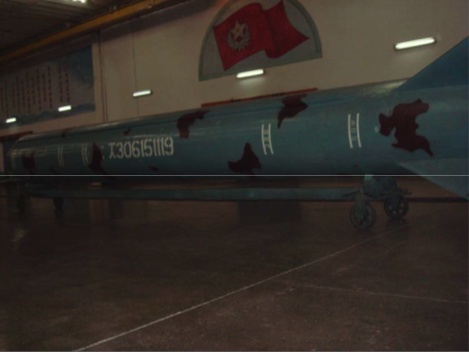
North Korean No. 125 Factory, or “Pyongyang Pig Factory” as it is called by North Korea, in Pyongyang, produces surface-to-ship SCUD missiles. This photo was taken by a secret Burmese military delegation. The factory has also hosted missile buyers from the Middle East, including Syria.
But the two incidents were not the first time North Korean and Syrian military scientists had died during the quarter century the two pariah nations have methodically collaborated.
And it would not be the last.
The blast at the al-Safir chemical warfare and ballistic missile development facility which was built with crucial North Korean collaboration in July 2007, and the destruction of the nuclear bomb making plant weeks later by an air assault of Israeli F-16 fighter jets, are just two in a series of occasions when Syrian and North Korean clandestine operatives have died working on Damascus’s illicit WMD arsenal.

The Tirshan military museum in Damascus buily and designed by North Korea. The artist renderings are also created by the North Korean propaganda artists in Pyongyang
The clandestine weapons collaboration between North Korea and Damascus in recent years has left a trail of bodies from Moscow to the Syrian desert to North Korea in a deadly game of spy versus spy hidden in the shadows of the Middle East.
A mysterious blast near the Chinese border in North Korea nine years ago was one of many incidents in which key personnel have met violent ends cooperating with Syria in developing weapons of mass destruction.
SYRIA AND THE RYONGCHON ‘BOMB’
In early 2004, the United States National Security Agency detected a curious, unusually high cluster of sustained electronic communications traffic between a remote location in the northeast Syrian Desert and Pyongyang. The NSA shared the information with Israel’s military signals intelligence and cypher department, Unit 8200, which designated the information for priority monitoring.
A few months later, on April 22, 2004, an explosion destroyed a train and decimated the small northwestern North Korean town of Ryongchon, in the heart of North Korea’s missile, chemical warfare, and nuclear weapons industrial production infrastructure, as the freight train headed to the coastal shipping port of Nampo with its highly secret cargo.
The explosion, measuring 3.6 on the Richter scale and detected at international earthquake monitoring stations in Russia, Japan and the United States, was so devastating that Pyongyang appealed for emergency international humanitarian aid to address the crisis–a highly unusual public action by the secretive regime. The International Committee of the Red Cross was allowed to visit the area and reported 40% of the town had been flattened, more than 160 people killed and 1,300 injured, destroying thousands of buildings and leaving a crater 72 meters deep at the Ryongchon railway station.

Photo of crater after explosion, Ryongchon 2004 | Picture credit: David Hill, ECHO
Nine hours earlier, Kim Jong-il, the ruler of the world’s most closed and destabilizing nation, had passed through the station in his private rail-car on the return from a visit to his allies in Beijing.
Pyongyang officially said a train carrying fertilizer containing ammonium nitrate and petroleum accidentally came into contact with electrical wires and exploded, but in the years since a clearer portrait of intrigue has emerged suggesting intentional sabotage was responsible for the massive explosion.
In fact, the train was destroyed by a mobile telephone remote control device activated by unknown persons nearby, intelligence agencies have since concluded.
Never acknowledged is that more than a dozen Syrian ballistic missile weapons scientists and technicians employed by the Syrian Scientific Studies and Research Center, the agency in charge of Syria’s covert weapons of mass destruction development program, were killed in the mysterious blast.
The Syrian weapons specialists were accompanying a highly clandestine cargo of missile and other components to the North Korean port of Nampo, destined for Syria’s weapons of mass destruction development program operated by the SSRC.

Destroyed train where 12 Syrian missile scientists were killed in Ryongchon, North Korea April 22, 2004
North Korean military wearing chemical hazard protective suits removed debris and the Syrian bodies from the scene. Within days, Syrian military aircraft arrived under the auspices of delivering humanitarian aid to the civilian blast victims, and on May 1 departed with the bodies of the dead Syrian SSRC employees.
The approximately one dozen dead Syrians were claimed by the SSRC, and the Syrian and North Korean military personnel who transported the bodies to the Syrian aircraft were also wearing hazardous protective suits.
By mid-May, North Korean security officials had found a damaged cellphone still wrapped in duct tape near the explosion and abruptly halted the countries entire nascent mobile phone system, confiscating the 10,000 mobile devices in use in the first national cellphone network, established only months before.
North Korea did not allow mobile phone use in the country for another five years.

Chemical weapons site in Syria where North Korean technical advisers are based ( Map by the James Martin Center for Nonproliferation Studies
In the period after the blast, Israeli and other intelligence services noted more than a dozen trips to Pyongyang by senior officials of the SSRC involved in their missile, chemical warfare and nuclear weapons development program.
On May 4, Sankei Sinbun newspaper in Japan first hinted at the blast not being an accident, reporting ten Syrians working for the Syrian Scientific Studies and Research Center were killed “accompanying ‘large equipment’ and that the damage from the explosion was greatest in the portion of the train they occupied.”
The paper reported that North Korean military wearing protective suits responded and “removed material only from the Syrians’ section of the train.”
But the paper offered no speculation as to the cause of the blast, saying it was “not known whether the cargo was the source of the explosion or whether it had exploded following a separate explosion on another section of the train.”
The bodies of the Syrians were “taken home on May 1 by a Syrian aircraft, which had come to Pyongyang to deliver aid supplies.”
Within weeks several foreign governments had privately confirmed the Syrian plane transporting the bodies back to Damascus.
“Syrian and DPRK medical and military personnel who were involved in transporting [the Syrians and other victims] were also reportedly wearing protective suits similar to those worn by the DPRK military personnel who arrived on the scene immediately after the accident.”
According to KCNA “in connection with the explosion at Ryongchon Railway Station…Emergency relief goods came to the DPRK from China, Russia and Syria at the end of April.”

North Korean officers visit Syrian government wounded soldiers in Damascus hospital in 2012 (Photo: SANA/North Korean Leadership Watch/Michael Madden)
Three weeks after the accident, North Korea cut all telephone lines to the rest of the world, likely to either to prevent foreign reporting or to shield their own population from learning news about the accident
On May 18, MiddleEastNewsline reported that a “North Korean missile shipment to Syria was halted when a train collision in that Asian country destroyed the missile cargo and killed about a dozen Syrian technicians,” citing U.S. government sources. “The officials said the technicians were accompanying a train car full of missile components and other equipment from a facility near the Chinese border to a North Korea port.”
“The way it was supposed work was that the train car full of missiles and components would have arrived at the port and some would have been shipped to Syria while others would have been transported by air,” an U.S. official was quoted by MiddleEastNewsline.
The source stated that the plane came to bring the relief supply from Syria and returned with the bodies. The bodies were claimed by Syrian Technical Research Center(Centre d’Etudes et de Recherche Scientific: CERS)
The US official said the North Korean train cargo was also believed to have contained tools for the production of ballistic missiles. North Korea has sold Syria the extended-range Scud C and Scud D missiles, according to reports by Middle East Newsline.
Officials said the North Korean shipment to Syria was not meant to have contained chemical or biological weapons. Foreign relief workers from the International Committee for the Red Cross and the United Nations who surveyed the scene at Ryongchon the day after the blast did not report any chemical contamination.
“Syrians were wearing protective suits at the time of the accident and in the middle of transporting large packaged equipment. At the explosion, a lot of N. Korean Scud-D missiles and (rocket) propellant went off.”
Foreign intelligence sources have confirmed to NKNews that the missiles were assembled at ‘Shin-eum-ri Factory’ near Pyongyang, the rocket engines were made at ‘January 8th Factory’ in Kaechon, the missile bodies were manufactured at ‘No. 26 Factory’ in Namchondong, and chemical warheads at ‘Namheung Chemical Factory’. These components were being transported on the train at the time of the explosion.
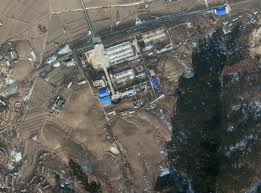
The Tae-sung Machine Factory (a.k.a., Chamjin Missile Factory) is North Korea’s primary manufacturer of ballistic missiles, conducting final assembly of components and sub-systems it has produced or from those supplied to it from other facilities and sources. While the primary responsibility for the development of the Taepodong and Unha systems lies with the No. 7 Factory of the Second Academy of Natural Sciences (SANS), the Tae-sung Machine Factory has been associated with the production phase of these systems. Includes satellite imagery from DigitalGlobe’s Analysis Center. (KPA Journal/Joseph S. Bermudez Jr.)
But other officials said the North Korean shipment did not include chemical weapons, noting foreign rescue crews and humanitarian aid workers at the train explosion site did not report any chemical contamination.
Japan’s Kyodo News cited diplomatic sources in Vienna saying the explosion measured 3.6 on the Richter scale, a blast equaling about 800 tons of TNT — eight times that announced by North Korea. The blast statistics were compiled by the Comprehensive Test Ban Treaty Organization. Korean Central News Agency had reported that the power of the blast was that of 100 tons of dynamite.
The CTBTO said the explosion was observed using seismological observation stations built to detect nuclear tests in Korea, Japan, the United States and Russia.
On May 19 all cell phones were confiscated in Pyongyang, and the next day the ban was imposed nationwide.
In secret U.S. embassy in Seoul cables from 2009 released by WikiLeaks, U.S. diplomats reported Hyundai Group Chairwoman Hyun Jeong-eun, who met North Korean leader Kim Jong Il in Pyongyang in 2007, told U.S. Ambassador to South Korea Kathleen Stephens in 2009, “Kim believed that the explosion at Ryongchon Station was a failed attempt to assassinate him.”
Hyun was quoted in the U.S. embassy documents saying the explosion “was revealed through mobile phones” and “the introduction of mobile phones in the North was markedly delayed.”
The Chinese Chongqing Evening News in Szechuan province reported “analysts believe that the catastrophic consequences of this North Korean train explosion followed from an attempted plan to target North Korean leader Kim Jong-Il for assassination” saying “clues collected along the tracks indicated that unhealthy elements had used mobile phones. For fear that internal information would leak [to the outside], the mobile phone business would be stopped.”
The order to halt mobile phone service came “directly from the Korean National Defense Committee” ordering “that previously held mobile phones confiscated.”
By 2008, diplomats had concluded that the reports of dead Syrian scientists were true. The London Sunday times reported that “Diplomats based in Pyongyang have said they now believe reports that about a dozen Syrian technicians were killed” in the blast.
“Their bodies were flown home by a Syrian military cargo aircraft which was spotted on May 1, 2004 at Pyongyang.”
The Times said “Diplomats said the Sankei Shimbun report was now believed to be accurate.”

Large portrait of founders of Syria and North Korea at the North Korean constructed and designed Tirshan War memorial museum in Damascus
On May 24, the South Korean paper Chosun Ilbo reported that North Korean security police believed the explosion was an assassination attempt against leader Kim Jong Il, quoting a North Korean businessman on a visit to China as saying “The North Korean National Security Agency has investigated the incident since it took place and concluded that rebellious forces had plotted the explosions targeting the exclusive train of Kim Jong-il. The security agency, in particular, gained evidence that cell phones had been used in triggering the explosion and reported to the North Korean leader that the use of cell phones should be banned for the sake of the leader’s safety.”
The paper quoted a defector in China saying “It doesn’t seem to be a temporary measure, because even handsets have been conscripted following the cell phone use ban.”
Several years later, British author Gordon Thomas, in a book on the history of the Israeli intelligence service, Mossad, wrote that Israel was aware “that dozens of Syrian nuclear technicians were in a compartment adjoining a sealed wagon” and that “the Syrians had arrived in North Korea to collect the fissionable material stored in the wagon.”
He wrote that “all of the technicians were killed in the train explosion” and “their bodies were flown to Syria in lead-encased coffins aboard a Syrian military plane” and that Mossad believed that “North Korean soldiers in anti-contamination suits (who) collected wreckage and sprayed the area…were trying to recover weapons-grade plutonium.”
In the wake of the explosion, Thomas wrote, “Mossad tracked about a dozen trips by Syrian military officers and scientists to Pyongyang, where they met with high-ranking North Korean officials.”
Western intelligence officials, who say they do not know what caused the massive blast, do confirm that the Syrian military technicians were working for the SSRC, and were in North Korea carrying out the purchase of ballistic missile systems designed to be equipped with chemical warheads.
“DPRK military-related personnel wearing protective suits arrived on the scene immediately after the explosion and removed debris only from that section of the train where the Syrian group had been aboard,” according to the Japanese newspaper Sankei Shimbun on May 4, 2004.
Syrian military aircraft arrived within days under the auspices of delivering humanitarian aid to the civilian blast victims, but departed on May 1 with the bodies of the dead Syrian SSRC employees. The Syrian and North Korean military and specialists who transported the bodies to the Syrian aircraft also were wearing hazardous protective suits like those of the first North Korean responders to the blast scene.
NUCLEAR COOPERATION
While North Korean-Syrian military cooperation was known to Western intelligence services since the 1990s, North Korean-Syrian nuclear cooperation was not identified until early 2007, only months before an Israeli airstrike destroyed Syria’s nuclear reactor in a remote desert region near al-Kibar in northeast Syria.
When Bashar Assad took power in 2000 after his father died, Israel began updating its intelligence file on the young leader who had just assumed power upon the death of his father.
Analysts noted a stream of high-level Syrian and North Korean officials responsible for, according to the Israeli investigative journalist Ronen Bergman.
But the information was dismissed by the Mossad, Israeli’s legendary intelligence service, as implausible.
In the annual CIA briefings to Congress on WMD proliferation, the CIA did not list North Korea as a supplier of nuclear technology between 2001 and 2006.
But intelligence had begun to mount after 2001 that nuclear cooperation between North Korea and Syria had in fact begun “probably as early as 1997”,according to later CIA conclusions reported to congress.
Mounting evidence in the following years, in addition to the interception of an unusual amount of electronic communication between a remote Syrian desert location and Pyongyang and numerous reciprocal visits of high level nuclear officials and scientists between Syria and North Korea, was a stream of North Korean procurement of nuclear technology which they delivered to Syria, and materials gathered by Israeli intelligence in break-ins to a Syrian official’s London hotel room, where the contents of his computers were seized.

North Korean Chon Chibu, nuclear engineer in charge of the Yongbyan nuclear processing plant with the head of Syrian Atomic Energy Agency in Syria. Note Syrian license plates on vehicle in background (Photo CIA)
This took place in December 2006, when a senior Syrian intelligence official came to London under a false name. Mossad agents broke into his hotel room and copied the contents of his computer.
What they found astonished them.
There were blueprints of a nuclear facility and scores of photographs of the nuclear plant under construction, apparently in the Syrian Desert.
One picture showed North Korea’s top nuclear scientist, Chon Chibu, who was in charge of North Korea’s plutonium nuclear fuel processing site at Yongybon, posing with Syria’s Atomic Energy Agency director, Ibrahim Othman. The license plates of the vehicles in the background of the two men clearly showed the rendezvous took place in Syria.
In February of 2007, a senior Iranian general attached to the Republican Guard Command defected to the west. He proved a goldmine of information. Deputy Defense Minister Gen. Ali-Reza Asgari revealed to the CIA and Mossad agents who debriefed him a bombshell of alarming information: Iran was financing a nuclear facility near completion in Syria that was designed and constructed by North Korea.
The defection was top secret and Asgari soon disappeared. Iran announced he had been “kidnapped by the Mossad and probably killed.” In fact, Asgari was whisked to a U.S. military base in Germany where he provided key details before being given political asylum.
ISRAELI STRIKE
In August 2007, Israeli commandos dressed as Syrian soldiers were inserted by helicopter into the remote northeastern Syrian Desert to the purported nuclear site near the Euphrates River. They collected samples which were brought back to Israel. Tests confirmed not only the presence of nuclear material, but the signature showed that it originated in North Korea.
Both Israel and Washington knew that there were North Korean specialists working at the site. “There are North Korean people there. There’s no question about that,” U.S. State Department official Andrew Semmel was quoted as saying in the aftermath of the attack.
That September 3, a North Korean ship, the Al Hamed, arrived at the Syrian port of Tartus with a cargo manifest claiming to be carrying cement. An Israeli agent was monitoring the ship and took photographs of the cargo. Israel contends the vessel was delivering key nuclear material for the plutonium weapons plant.
Three days later, and two months after the deadly blast at the Aleppo chemical weapons site, eight Israeli F-16 fighter jets mounted the stealth air strike on a top secret plutonium production nuclear weapons facility being built under contract by North Korea near al-Kibar .
Ten more North Korean nuclear scientists and technicians were killed in the Israeli assault.
The nearly completed North Korean-designed and built nuclear facility was the result of a secret pact signed by senior North Korean government officials with Assad in June 2002.
The estimated $2 billion nuclear weapons facility in Syria was partially financed by Iran.
North Korea was additionally paid with five annual deliveries of 100,000 tons of Syrian wheat, in a $120 million-deal personally signed by Assad, documents in the Syrian president’s handwriting show.
The bodies of the 10 North Korean nuclear advisers killed in the Israeli bombings were returned to North Korea in October.
In a secret April 2008 U.S. diplomatic cable released by WikiLeaks, then U.S. Secretary of State Condaleezza Rice wrote to State Department officials that Israel had destroyed the reactor that “Syria was clandestinely constructing, we judge with North Korean assistance.”
http://www.fas.org/irp/news/2008/04/odni042408.pdf
Rice spoke of the fear that Washington had of publicizing the information: “We have delayed sharing this information with you, because our first concern was to prevent conflict. “We believe -based on strong evidence- that North Korea assisted Syria with the reactor,” Rice wrote. “The U.S. intelligence community conducted an intensive, months-long effort to confirm and corroborate the information Israel provided us on the reactor and to gather more details from our own sources and methods…our intelligence experts are confident that the facility the Israelis targeted was in fact a nuclear reactor of the same type North Korea built indigenously at its Yongbyon nuclear facility” and “we have good reason to believe this reactor was not intended for peaceful purposes.”
<iframe width=”420″ height=”315″ src=”http://www.youtube.com/embed/yj62GRd0Te8?rel=0″ frameborder=”0″ allowfullscreen>
OVERCOMING SETBACK
Undeterred by either the military strike on the Syrian nuclear facility in September or the July explosions at the chemical weapons facility, North Korea and Syria exchanged high-level weapons delegations for urgent meetings immediately in September, October, and November.
On September 10, 2007, four days after the Israeli bombing of the Syrian facility, North Korean leader Kim Jong Il sent a message to Assad reaffirming that “the excellent friendly and co-operative relations between the two countries are steadily growing stronger even under the complicated international situation.” A more strident message was sent the following day condemning the Israeli air assault as “illegal” and a “very dangerous provocation.”

North Korean top envoy meeting Syrian head of state Assad in Damascus in 2006
On September 22 2007, a delegation of Syrian diplomats, led by leading Ba’ath party figure Saaeed Eleia Dawood, was met by Kim Yong Nam, head of the Supreme People’s Assembly.
On September 24 of the same year North Korea’s official party newspaper, the Rodong Sinmun, said, “Israeli warplanes’ intrusion into the territorial airspace of Syria and bomb-dropping are an outright violation of Syria’s sovereignty and a grave crime that destroys regional peace and security,” and that the United States supported this “brazen behavior.”
In November 2007, North Korean ground-to-ground missile engineers secretly returned to Syria to hold talks on how to resume tests to arm with chemical warheads the ballistic missiles Pyongyang provided to Damascus. The objective was to extend the range and accuracy of Syrian missiles to be able to reach the entirety Israeli territory.
ASSASSINATIONS
In February 2008, Hezbollah” chief of security” Imad Mughniyah was assassinated in downtown Damascus.
He was also Hezbollah’s chief liaison with Pyongyang
Mughniyah had made several trips to Pyongyang and coordinated North Korean assistance to Hezbollah, which included a variety of conventional weapons, including surface-to-air missiles, training by Pyongyang of their guerrilla fighters, and the sophisticated construction of a North Korean-designed and built underground tunnel network in southern Syria along the Lebanese border.

North Korea’s connection to Hezbollah, Imad Mughniyah | Picture: Wikipedia
Mughniyah was also one of the most-wanted terrorists and bomb-makers in the Middle East, widely recognized as the mastermind of the bombings at the U.S. Marine barracks and embassy in Beirut that killed hundreds of American troops and diplomats in the 1980s.
Israeli intelligence had information that Mughniyah was plotting a military attack in retaliation for the Israeli strike against the North Korean-built plutonium weapons facility, according to a detailed report by Der Spiegel in 2009.
On the night of February 12, 2008, Imad Mughniyah attended a party at the Iranian embassy in Damascus where other guests included the Hamas leader Khaled Mashal and the Syrian official in charge of coordinating covert weapons projects with Pyongyang, Gen. Mohammed Suleiman. After leaving the reception, Mughniyah was killed when a bomb placed in the headrest of the driver’s seat of his Pajero exploded.
Six months later, on August 2, 2008, on the coast near the Syrian city of Tartus, Suleiman was relaxing at his weekend home. Suleiman was Assad’s top military and security aide in charge of Syria’s covert weapons, including their missile, chemical and nuclear weapons-development program.
Suleiman was also Damascus’s chief liaison with North Korea.
Charged with ensuring the security of the North Korean scientists, military advisors and technicians stationed in and visiting Syria, Suleiman had made numerous trips to North Korea to personally oversee the procurement of nuclear and, chemical weapons, as well as ballistic missile components.
Suleiman was in charge of “development of missiles, chemical and biological weapons and nuclear research and development. He coordinated the transfer of the reactor’s parts to Syria and was in charge of security arrangements for the North Korean scientists and technicians involved in its construction,” wrote Michael Bar-Zohar and Nissim Mishal in their 2010 book “Mossad: The Great Operations.”
After the Israeli bombing destroyed the plutonium production site, Suleiman began plans to build a replacement nuclear facility, but “Suleiman’s new mission was much more complex and difficult than before, since he was now aware that he was on the Israeli and American intelligence agencies radars.”
Accounts of what happened next vary depending on what sources are cited, but agree that Suleiman was in his vacation home when assassins’ bullets killed him while he was eating at his dinner table with family and friends.
A yacht with Israeli navy scuba divers and snipers was two kilometers off the Syrian coast.
According to the London Sunday Times, two scuba divers with guns in water-proof cases swam to shore, identified Suleiman and both fired one shot, hitting the chief of Syria’s missile, chemical and nuclear weapons program in the head. Other reports suggest Israeli snipers firing from the sea vessel.
Several days after the killing, Syria’s official media released a short statement: “Syria is holding an investigation to find those responsible for this crime.”
Secret U.S. diplomatic documents, released by WikiLeaks, quote U.S. officials saying Syria believed Israel was responsible for the assassination of Suleiman, who “enjoyed a reputation… as having special status and proximity to Assad.”
“As in other recent assassinations in Syria, speculation about who could have done it will likely be rampant,” read the classified August 2008 cable from the U.S. embassy in Damascus. “The most obvious suspects are the Israelis.”
RUSSIAN CONNECTION
In the 1990s, the commander of the Russian Military Academy for Chemical Warfare, Gen. Anatoly Kuntsevich, was also the top adviser on chemical weapons disarmament for then-Russian president Boris Yeltsin. But, as the former Soviet Union disintegrated, Kuntsevich secretly took on lucrative freelancing opportunities on the international chemical weapons black market.
In 1993, through a front company Kuntsevich created, he provided Syria 800 kilograms of key chemicals, smuggled from the Russian Military Academy for chemical warfare, to produce a sophisticated version of VX nerve gas which was adapted into chemical warheads.
Kuntsevich worked secretly for Damascus in exchange for large amounts of money to build their chemical weapons programs until 2002, when he was said to have died mysteriously on a flight from Damascus to Moscow. But Israeli investigative journalist Ronen Bergman notes that his headstone in a Moscow cemetery lists his date of death as three days before the flight’s departure.
His death came after several high level demarches from Israel to the Kremlin to force Kuntsevich to cease his chemical weapons activities went unaddressed.
And in 2010, the Russian deputy head of the GRU, the military intelligence agency, died in a purported swimming accident in Damascus.
Israeli agents are suspected of being responsible for both deaths.
HOME TERRITORY
In July 2012, the core leadership of Syria’s military and security services were killed or injured in a bomb attack at the headquarters of the National Security Bureau in Damascus. Asef Shawkat, head of military intelligence; Rajha Daud, Minister of Defence; Hesham Bakhtiar, head of the National Security Service; and Tourkmani Hassan, Chief of Staff, were killed in the blast.
What went largely unnoticed was the assassination four days later of Dr. Nabil Zougheib, Syria’s top missile scientist and head of the missile development program for the Syrian Scientific Studies and Research Center.
A trained missile engineer, Brig. Gen. Nabil Zougheib was a frequent visitor to Pyongyang. He had directly supervised North Korean missile engineers weaponizing North Korean supplied ballistic missile with chemical warheads.
“We have seen assassinations to people who hold key positions in research programs where the aim was to stop these research programs as with Doctor Nabil Zougheib,” Damascus based Syrian journalist Alaa Ebrahim said in media interviews.
Other Syrian scientists assassinated include a nuclear engineer and researcher, Aws Abdel Karim Khalil, and Brigadier General and chemical engineer Na elDakhil from the Department of Chemical Engineering.”
Dr. Ali Mohamad, editor-in-chief of the Syria Tribune, a pro Assad Damascus based media organization, said in a media interview “Let’s remember that the Syrian official who was responsible for all military research projects has been assassinated in Damascus by the rebels,” he said. “Let’s also remember that the person who orchestrated the Syrian long-range missile project colonel Dawoud Rajiha, was also assassinated in Damascus. This is about stopping the Syrian scientific military research projects and is about breaking the link that will help [Israel] overcome the Lebanese resistance and the Palestinians.”
They were only the latest in a long list of dead scientists who have worked on Syria’s weapons of mass destruction development program over the last decade.
Tags: democratic peoples republic of korea, Nate Thayer, North Korea Covert Operations, North Korea Israel, North Korea Middle East, North Korea sanctions Kim Jong-un, North Korea Spies, North Korea Syria, Smuggling









